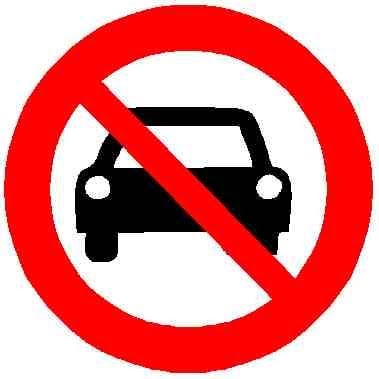That area should hold about 400 people, not 40,000. The trees won’t survive unless they can see the sky.
Why building something on it instead of converting it into a park? People love green stuff, you know.
Why does it need to be a dedicated park? They’re not proposing getting rid of all the green stuff. Even better than having green stuff some distance away is living in the middle of the green stuff.
Why building something on it instead of converting it into a park?
Because rich people need money to build a bigger golf course somewhere else
but then where should the rich people go golfing?
in hell
On Mars
Not sure how it works in the US but here in Oz (where water scarcity is always present in our collective psyche) golf courses are usually placed on flood plains where it would be dangerous/too expensive to build housing. In addition most allow people to walk through them and many even allow dog walkers so they have quite a lot of public amenity.
I would still prefer if they were just designated as public parks rather than having huge swathes of grass that needed frequent watering, but they’re not nearly as bad as most make them out to be.
Public golf courses are one of the best things about Oz. They provide a forest island for birds and mammals among the suburbs. Many golf courses have large swathes of natural bushland around them. They are often run by the local council, and are hence not for profit, and generally they are very cheap to play.
They make most of their money via selling beer and expensive golf clubs.
Turn them over to property developers, and they’ll pave it with cheaply built single dwelling houses and flog them for way too much money resulting in just more urban desert and padded the obese wallets of billionaires.
The revenue earned by the golf course that is used to offset local parks and recs costs would otherwise be gained by taxing the local residents through land rates.
In Germany most courses only have a few public walkways and if you leave them security will escort you right out
Yeah, here in the US, golf courses can be extremely wasteful. There’s two golf courses on my drive into the city, one is on a river floodplain, the other is a HOA golf course full of sprinklers that could absolutely be more housing. If I go the other way, there’s another HOA golf course that could be housing too. So, to start with, there’s three golf courses in a 15km radius.
One of the HOA ones is exclusive access to the surrounding retirement community, the other HOA one doesn’t have a fence or anything, but idk if they chase people off. The one on the floodplain you have to pay to access the grounds.
Now add in mixed use zoning, and affordable housing units and this could be a winner
I work at a golf course and I’d rather be doing something meaningful like building homes so this post speaks to me directly.
Unfortunately the big thing lately is we’ve been dropping a bunch of trees.
Let’s also get rid of golf courses in arid deserts in the midst of droughts
You had me at “Let’s get rid of golf courses”
This is a municipal course as well, so Seattle could literally do this. The city government doesn’t want to.
This heavily neglected sidewalk, next to the fenced off golf course, alongside a high speed and very busy highway onramp just 2 blocks from a light rail stop, tells you just how much the city cares about the area.
There is no excuse not to cleanup and widen this sidewalk except apathy and malaise from the city.
@mosiacmango @PugJesus
My wire cutters, pipe cutters and bolt cutters are cheaper than your fence.That lady is Seattle personified.
A fairly generic lady and that’s what you took from that guy’s comment?
You’re probably not going to save 95% of the trees given the major earthworks likely needed for managing sewage, stormwater, and other utilities. You’ll probably save most of them, though.
40k looks pretty optimistic for the size and number of buildings, too.
I don’t know if it’s the same in USA but with all these new regulations building houses these days is an environmental disaster
probably not going to save 95% of the trees
I was wondering that too… maybe they meant: plant new trees, and the total number of new trees would be 95% of the number of old trees?
I’m guessing they’re just not aware of construction impacts on trees. It’s not something most people think about.
I supposed they meant “And this amount of space is still available for greenery” rather than “These, specific, trees will be preserved”
Depends how many floors they have but yeah, that would be quite high density at 60k/km²
Plus you can live in a pentagon! Just not the Pentagon.
BuT wHeRe WouLd i PaRk mY cAr?!?!!?
That’s the neat part, you don’t.
car
car go
car go bye
cargo bikeif I saw this on a billboard/poster I’d have a new bike
Truly the poet of our generation 🥲
Preach!
In the water hazard on the 14th hole.
If you just repurpose for housing you just wind up with 40,000 people needing transit and overloading the system you’re trying to promote.
We need to think beyond housing and towards having communities that largely provide the needs of the people living with them. Shops, offices, other non-office/shop jobs, and recreational activities need to be considered as well.
Most suburban streets are 50 feet wide, many suburban front yards are 50 feet deep. That’s a wasted space 150 feet wide and however long the street is long. Think of how much housing could be built in that space if you tore up that road, and in its place put a pair of alleyways housing in the middle
I would argue closer to 30, unless you’re including all the easement and sidewalks?
Good luck with the NIMBYs. Or NIMFYs now I guess?
When there’s no more golf you’ll know the rich fucks are gone.
Not for nothing, but this wouldn’t fly in the USA. You’d need to replace most of those trees with roads.
Or better yet, reduce the number of housing units and keep the trees.
This is Seattle btw, but I think the meme is that it won’t fly.
But where would we play golf?












